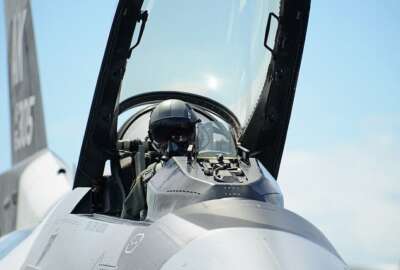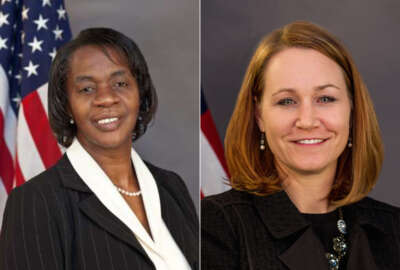
Air Force leverages big data for better face-to-face recruiting
The Air Force plans to hire 1,400 cyber and 2,000 acquisition personnel over the next year. To do that, it's taking a fresh approach to how it recruits.
The Air Force plans to hire 1,400 cyber and 2,000 acquisition personnel over the next year. To do that, it’s taking a fresh approach to how it recruits.
Jeff Mayo, the deputy assistant secretary of the Air Force for force management integration, said filling the open billets is a high priority.
“The really compelling thing in this market is the government has always been challenged with being able to pay and incentivize at the pure paycheck level with industry, but there’s a lot of benefits for Air Force civilians on the non-tangible,” said Air Force Deputy Chief Information Officer Bill Marion, who joined Mayo during an interview on the Human Capital Management Insights show. “Whether it’s health, vacation, whatever the case … what really sells it is when we have the mission flavor and the mission focus that we can deliver.”
Marion said part of that is showing potential recruits how cyber jobs support flight-ops or how cyber-ops are critical to defeating ISIS. They even talk with potential recruits about the kinds of projects that he or she might become involved in.
“That’s really what’s going to bring them in … not necessarily the paycheck per se, it’s all the other value and service that they can provide to the United States,” said Marion.
He said they aren’t waiting for the talent to come find them.
“I think the key is we’re sending people out to where the talent resides, whether it’s colleges, universities, other communities where there’s a technical base that they can reach out to,” said Mayo.
“We’ve got a cell down at our personnel center in San Antonio that reaches out to engineers, program managers, contractors,” he said. “Our primary mechanism for reaching civilians is USAjobs, but what we try to do is reach out to them and help make those connections with that.”
One area where they’ve had success on the acquisition side is job fairs and hiring events. Mayo said they want to pattern cyber hiring efforts along the same lines.
“We’re able to use certain expedited hiring authorities and direct hiring authorities in the acquisition business and a smaller set of those are eligible in the cyber workforce as well,” he said.
“On the mission systems side, we’re trying to build deeper and stronger knowledge bases across the board. Getting more engineers, computer science and cybersecurity expertise into our weapons systems, along with our traditional infrastructure capabilities,” said Marion. “So it really required us to look differently about how we recruited.”
More Air Force News
He said they’re combining tried and true recruiting methods with big data analytics to find “centers of gravity” for talent, merging efforts like Defense Innovation Unit Experimental (DIUx) and Air Force Digital Services along with Reserve Officers’ Training Corps. They look for talent from schools that do well in the National Cyber Collegiate Defense Competition.
“There is a huge amount of data out there, and some of it can help us make the connections that we need to,” said Mayo. “The number of recruiters we have is fairly limited so we need to use some analytical tools — take advantage of much of the data that we have — to minimize that search effort, to hone us in on the specific individuals that we’re looking for.”
One test underway in New England brings both military and civilian, active and reserve recruiters, seeking both officers and enlisted personnel, together on a common contact management system to find new areas to recruit in.
“We’re really trying to expand our view, our ability to reach into the talent pool across the United States,” said Mayo. “and I think big data is one of the things that will help us do that.”
He pointed to one recent success, where they were able to more quickly fill around a dozen positions at Scott Air Force Base, in the cyber/infotech community, from a hiring event using analytical tools and sources like LinkedIn Recruiter.
“The ability to make a difference, the ability to learn and be trained I think is significant for what the Air Force has to offer,” said Marion. “Being able to meet with these folks and explain it as opposed to have them read something on a web page or whatever — there’s great information out there — but the face-to-face interaction I think is what we’re seeing that tends to help things out … that connection across the various entities of the base level and the functional community, as well as the hiring officials, we’re able to speed up that process and provide a fairly compelling argument for becoming an Air Force civilian.”
Copyright © 2024 Federal News Network. All rights reserved. This website is not intended for users located within the European Economic Area.
Lauren Larson is Federal Drive producer and broadcast operations manager at Federal News Network. Follow @llarsonWFED
Follow @llarsonWFED





